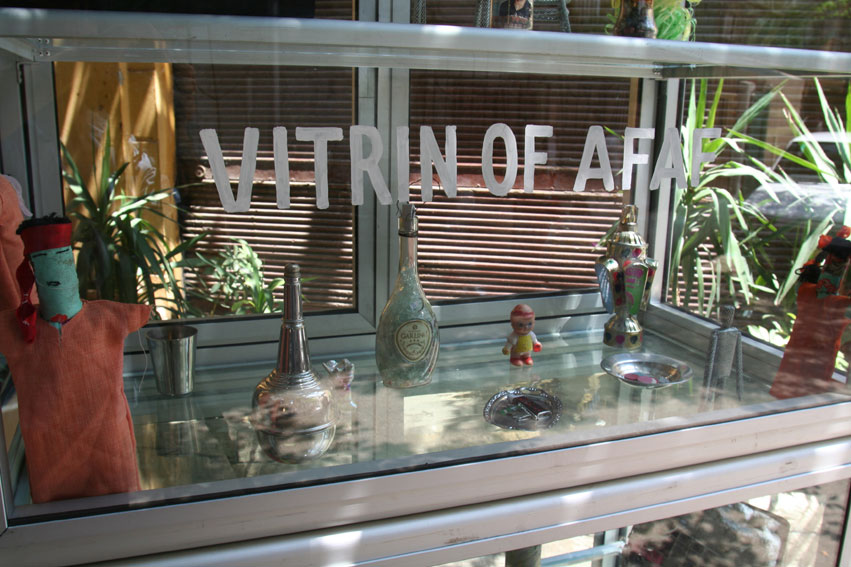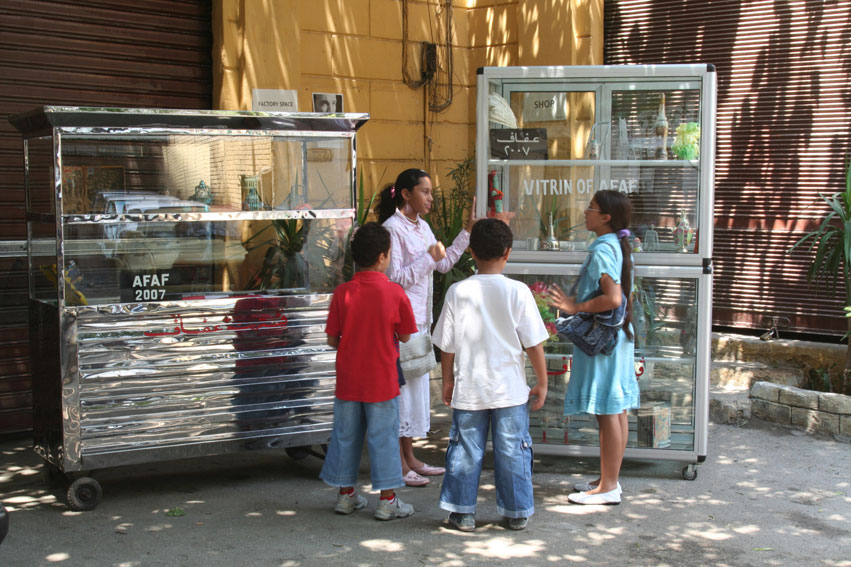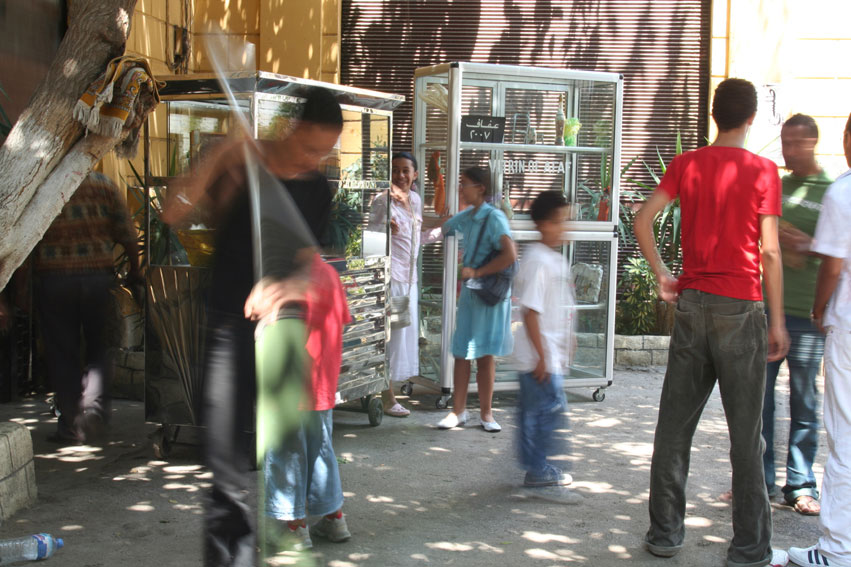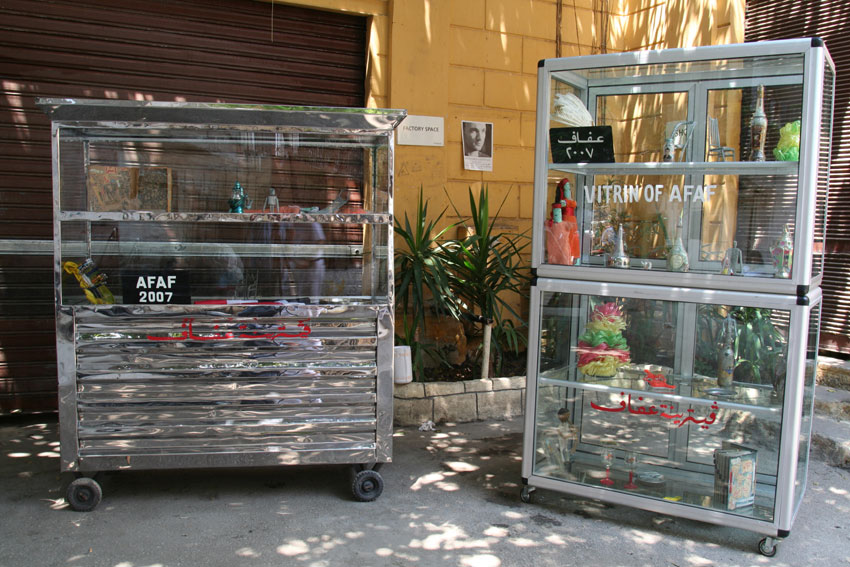
Vitrines of Afaf
The four Vitrines of Afaf first where exhibited in the lane in front of Townhouse Gallery Cairo, in December 2007 between the coffee shop and factory space of Townhouse. During summer 2007
I visited homes of women in Cairo for four months. All these women are wifes, daughters, sisters, mothers of workers from Townhouse Gallery and other men working in the lane in front of Townhouse. People I knew since 10 years, but I never had met their wifes, mothers, sisters, daughters. The men went with me to their homes in Cairo`s suburbs and introduced me to the women. During days, weeks, months I built up relationships, talking, eating, drinking tea, telling them about the project. These women normally stay at home. I asked them to give me an object of their house, their daily surrounding, any object, which for them contains some special meaning, dream, story, phantasy and which they would like to contribute for a Vitrine to be shown in public on the street in Cairo, visible to other people and would later travel around the world. The object should be related to their own identity, all these individual objects, statements will become part of the work, of the structure, of the net. A women living with three adults only in one small room gave me a plate, telling me about the life of this plate, which always disappears for some weeks and then suddenly shows up again, a coptic family gave me woven wheat, which they use for Easter celebrations, I got hand made dolls, protecting against evil eye, Ramadan decorations, a Mickey Mouse made in China; cups, the portrait photo of a son in a bottle, filled with sand, a gift you usually bring from Alexandria summer holidays; figures made of metal wires, flowers, letters, books, an Om Kalsoum CD, the famous Egyptian singer, and so on … all their contributions loaded with personal meanings, with energy, completed the work. In the end I collected different objects mostly from women, but also from the men which introduced me to these women.
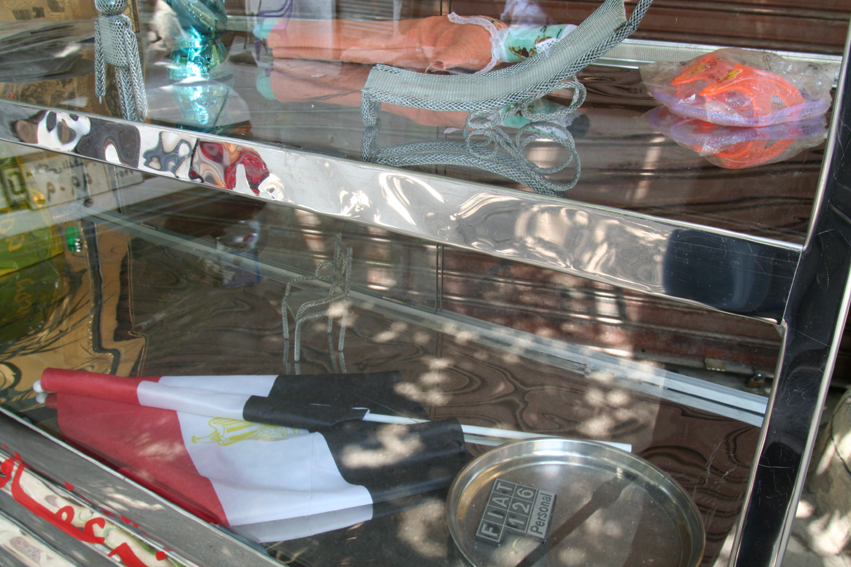
The Vitrines exhibited on Cairo’s street, where visible for the people from the street – from people for people – the installation involved the local community in the street, A Museum visible day and night for the audience, for people which normally do not enter Galleries or Museums. People continued to tell each other stories.
In the beginning the empty Vitrines where a kind of empty/open gift, an opportunity for the people from Cairo, the people from the city to be invited to contribute a gift in return, which will become part of the work, of the structure, of the net, containing objects which are important for them and will interact with the viewers. The Western viewer can observe different cultural, personal, multilayered statements and not cliches.
The Vitrines also de-construct the idea of what an exhibition space, what a Gallery or Museum is. Where work should be exhibited and by whom. The work was displayed on the street, in movable/mobil Vitrines designed the way as many Cairo street shops, for example to sell food. The letters “Vitrine of Afaf” where written by a man working in this lane, who usually writes on Vitrines and car plates. I was inspired by the name “AFAF” as a synonym, a code-word for any woman/person which is unnamed, a person who’s name shouldn’t be known in public, who should be protected from the outside world. A synonym for anyone “unknown”, “unmentioned”, “unheard”, because of various reasons.
The Vitrines contain a collection of dreams, well wishings, utopias etc, moving from Cairo`s street, to NYC, and so on. People observe the Vitrines in different ways, depending where they will be exhibited. It depends on each cultural, social context and background of the viewer. The observer sees what he/she knows. The observer becomes part of the work. He/she will continue to tell the stories. The power of dreams, phantasy and story telling continues.
Susan Hefuna, 2007

